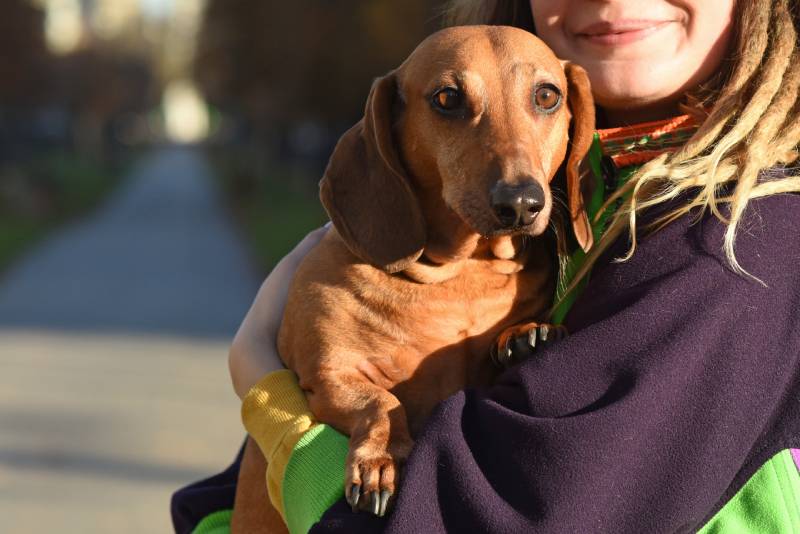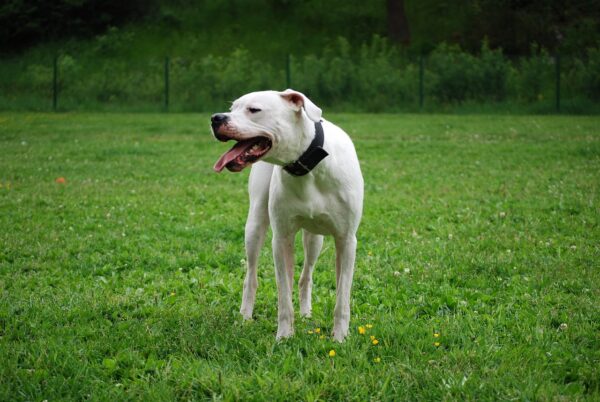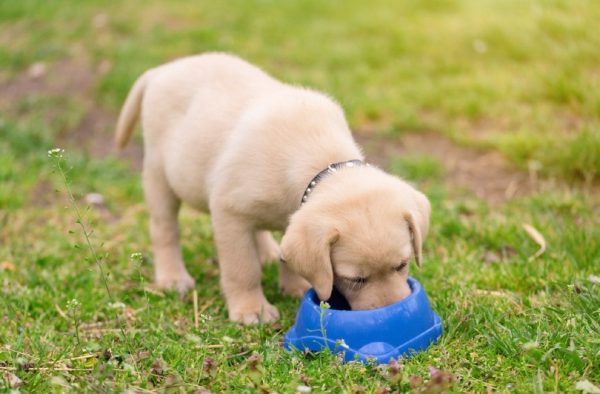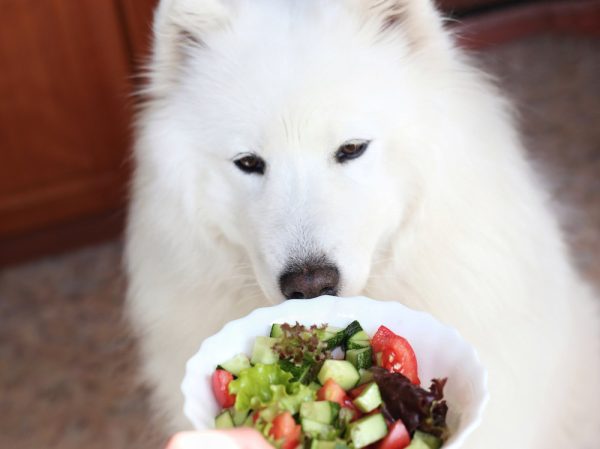A long back and short legs give the Dachshund their unique appearance and served them well when they had to burrow into badger dens during the hunts that they were originally bred for. Unfortunately, their body shape also makes them more susceptible to back injuries than most other dog breeds.
If you own a Dachshund, there will come a time when you’ll need to pick them up, whether it’s to get them onto a veterinarian’s exam table or to carry home a puppy that’s worn out from play. For these situations, you should know how to properly lift and hold your dog to prevent injury.
To help you out, here are 10 tips on how to pick up a Dachshund and hold them properly starting with 7 tips on how to pick them up and 3 tips on holding them.

The 7 Tips on How to Pick Up a Dachshund
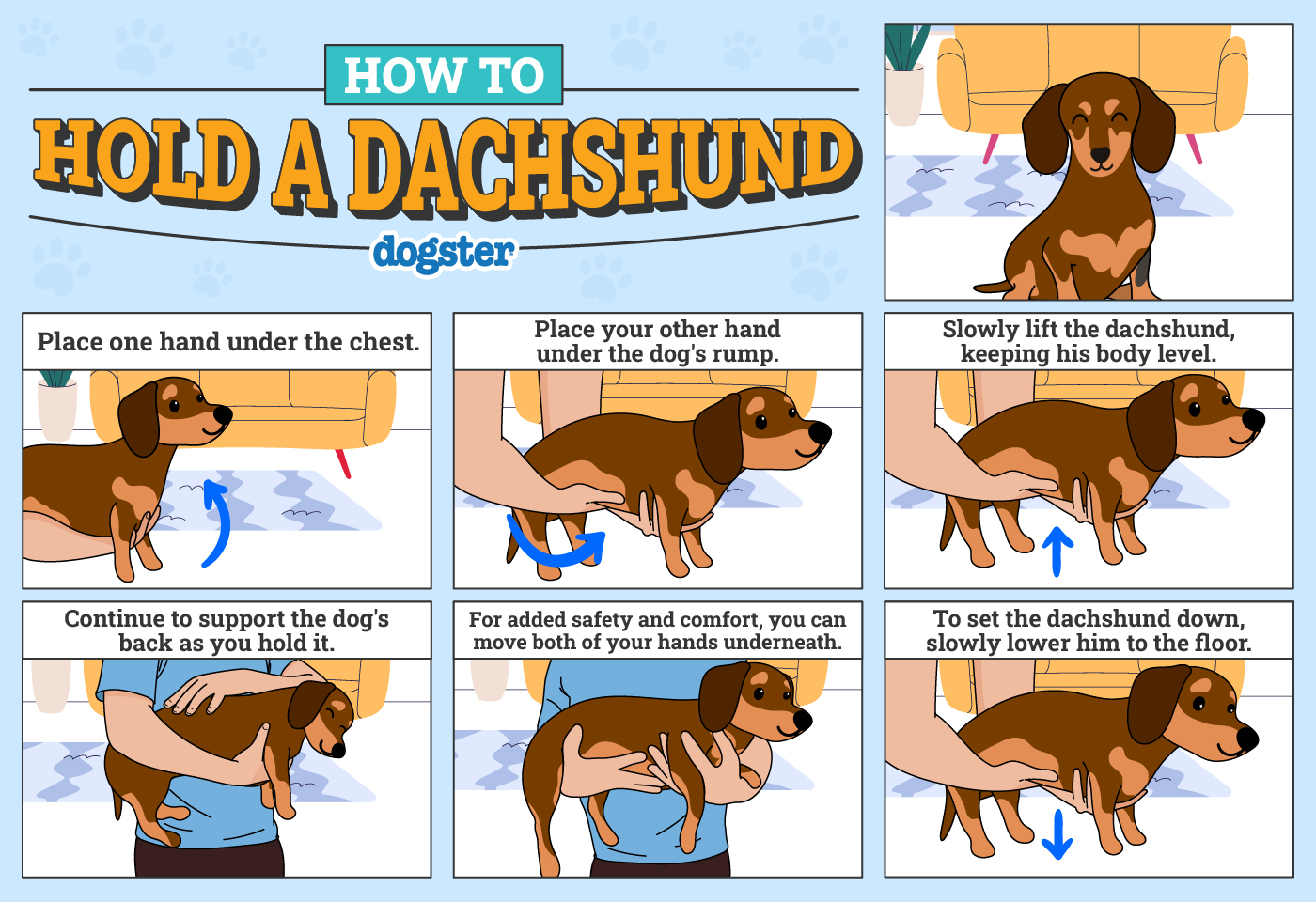
1. Always Use Two Hands
The first step in correctly picking up a Dachshund is to always use both hands. Place one hand under your Dachshund’s chest and the other under their rear or abdomen. Splay your hands wide to provide plenty of support and keep them from wriggling free.
Although you might be tempted to hook one arm underneath them and lift them that way, you should never do this. Using two hands helps you keep your dog as secure and stable as possible at all times.
Once you’ve learned how to properly hold a Dachshund, you’ll be able to do it automatically, but you should still pay close attention to your technique, especially in the beginning.

2. Keep Them as Horizontal as Possible
Once you’ve got your hands in position, focus on how you will lift your Dachshund. When you pick up this dog, you need to keep their back as straight as possible. To do this, make sure you lift with both arms at the same time.
It can feel slightly awkward when you first start lifting Dachshunds this way, but it’ll quickly become second nature. A little awkwardness to start with is worth it if it keeps your dog safe and healthy.
3. Support Their Back
Holding your Dachshund with two hands and having them be as horizontal as possible keeps them safe, secure, and comfortable. It also ensures that when they’re in your arms, their back is fully supported at all times, which helps limit the stress placed on their back when you pick them up, hold them, and set them back down again.
Supporting your Dachshund’s back is vital whether they have a healthy back or not. Taking steps to prevent the development of back injuries will save your dog from suffering and expensive treatments later.
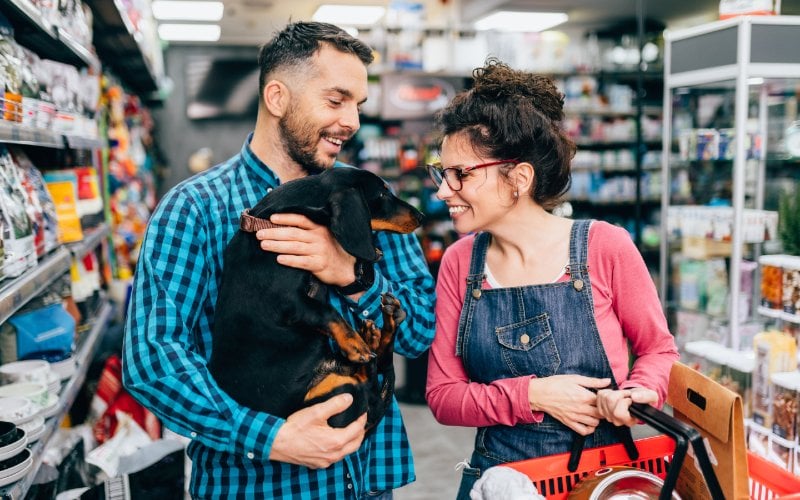
4. Lift Slowly
If you’re in a rush, it’s tempting just to scoop up your dog and go. While another breed might not have a problem with this, it’s never a good practice to get into. If you startle any dog by lifting them too quickly, you increase the chances of both of you getting hurt. The dog might panic and bite you or struggle so much that you end up dropping them.
When it comes to Dachshunds, remember that their backs are more vulnerable to injury than most other breeds. If they struggle too much and twist their backs or get dropped for any reason, you’ll have to take them to the veterinary clinic for diagnosis and treatment, which can be expensive.
Always make sure any dog that you intend to interact with, even if you’re familiar with them, knows you’re there and understands your intentions.
5. Supervise Children
Children love to cuddle and play with pets as much as we do, but Dachshunds need extra care and consideration due to their potential back issues. So, teach your children how to correctly pick up and hold your Dachshund to prevent injury to both child and dog.
You also need to make sure your children understand how to play carefully with their four-legged best friend. Supervise young children when they interact with your Dachshund to make sure no one gets over-excited and accidentally hurts the other.
If your children are too young to understand how to be careful around your Dachshund, never allow them to pick up or hold your dog. Your child may accidentally injure your dog or end up bitten if your Dachshund gets frightened or hurt.
6. Teach Visitors How to Interact With Your Dachshund
You shouldn’t just teach yourself and/or your children how to interact with your Dachshund; any guests who want to play with your dog should have a lesson in the correct techniques too. It might feel rude to intervene with how your guests play with your Dachshund, especially if you invited them over to meet your new puppy, but your dog’s health is the most important thing to consider.
Politely tell your guests how to hold your Dachshund correctly. You can also tell them that you’d rather that they don’t pick your dog up at all until everyone is more familiar with each other.
7. Never Let Your Dachshund Dangle
Due to the spinal injuries that these dogs can develop, picking them up isn’t as easy as it is for other breeds. For example, your Golden Retriever might be fine with being picked up under the forelegs so their back end dangles, but this can be painful to a Dachshund due to the strain that it puts on their back.
Even if your Dachshund is asking to be lifted onto the couch by sitting up on their hind legs, never pick them up by the chest; take the time to support their rear end too. Without proper support for their back, your Dachshund is more susceptible to straining something or hurting themselves if they struggle.
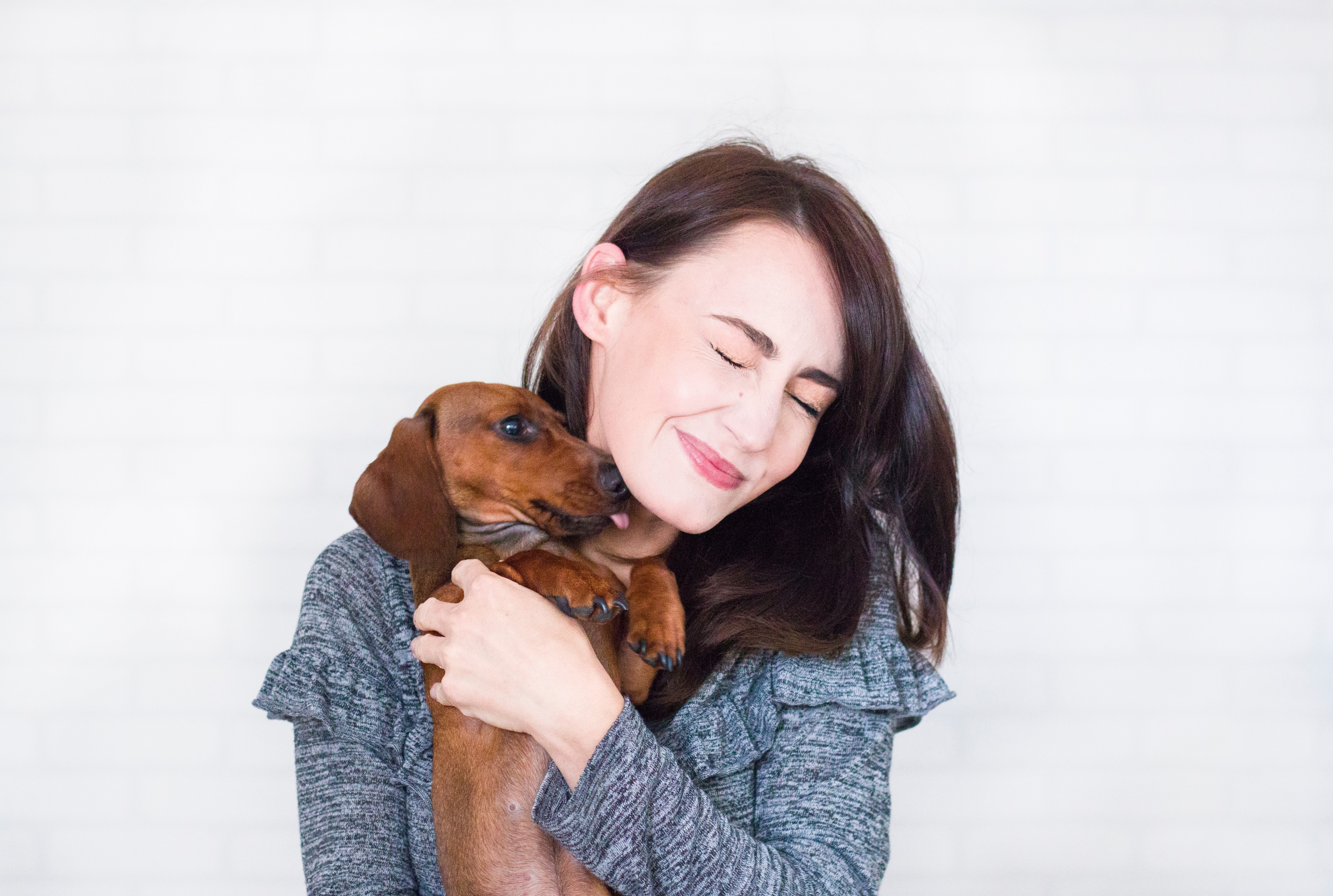

The 3 Tips on How to Hold a Dachshund
1. Make Sure Your Grip Is Secure
The right technique for holding your Dachshund is a bit different from picking them up, but it’s the same principle. Hold them securely, and keep their back as straight as possible. Ensure that your Dachshund is comfortable and safe at all times.
Many Dachshund owners will hold their dog in a cradle position — like a human baby — while others prefer to keep their dog the right way up to minimize squirming. Regardless, never hold your Dachshund away from your body. You need to keep them tucked in close just in case they start fidgeting. The closer they are to you, the safer and more supported they’ll be.
2. Don’t Ignore Distress
If you’re in the mood for a cuddle with your Dachshund, you might be tempted to ignore their squirming when you’re holding them. However, fidgeting or whining can be a sign of pain or discomfort, and you should always pay attention to what your Dachshund is telling you.
Even if you pick up your Dachshund correctly, if you hold them in the wrong way, you can still cause damage to their back, especially if they start to struggle to get free when they’re tired of being held.
If your Dachshund whines or struggles when you’re holding them, immediately set them down as carefully as possible to avoid dropping them.
3. Never Drop Your Dachshund
Once you’ve finished holding your Dachshund, knowing how to set them down again is essential. Remember that keeping them as horizontal as possible is crucial, whether you’re picking them up, holding them, or putting them on the floor.
You might be tempted to just put them close to the ground and let them go. However, a drop of even a few inches can put unnecessary pressure on your Dachshund’s back and joints.
To keep them as comfortable and safe as possible, always place your Dachshund on the floor properly before letting them go. All four of their feet need to be on the ground before you even consider removing your hands.
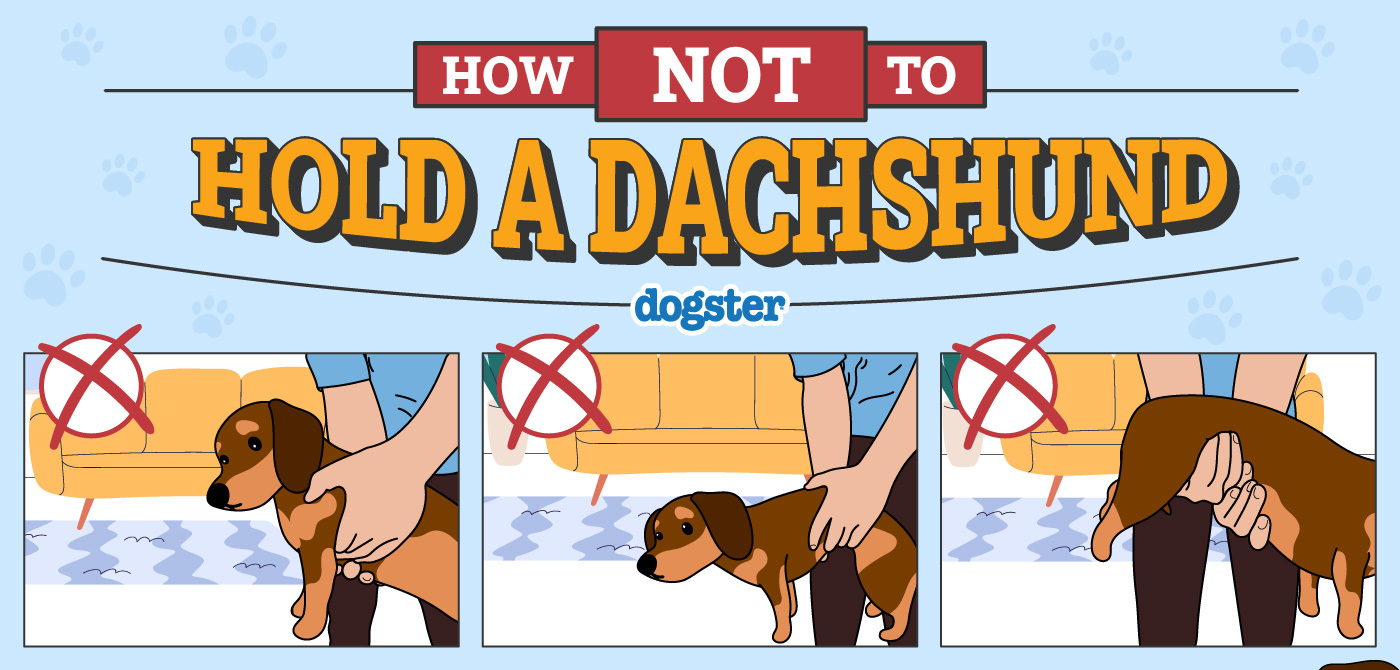

Should You Carry a Dachshund?
If you’re new to owning a Dachshund, all these potential health risks can make cuddling with them sound terrifying. Being cautious doesn’t mean you can’t carry them at all, though. Provided you’re careful, pay close attention to the right technique, and listen to your dog at all times, carrying your Dachshund is fine.
Teaching them to enjoy being carried at a young age plays a big part in keeping your dog safe when you carry them as adults. The more familiar with you and being carried they are, the more comfortable they’ll be in your arms. As soon as they show signs of distress, though, put them back on the floor carefully.
Why Do Dachshunds Have Back Problems?
Dachshunds are notorious for developing back problems or injuries sometime during their lives. While spinal injuries are a risk for all dog breeds, Dachshunds are particularly susceptible due to their short legs and long backs. It’s estimated that one in four Dachshunds will develop a back injury.
You can help minimize the risk by taking steps to reduce the strain on your Dachshund’s back. Know how to pick them up and hold them properly. Also, you can limit how much they jump onto the couch or your bed by providing a sturdy ramp or steps for them to use instead.

What Back Problems Do Dachshunds Suffer From?
The most common back injury for Dachshunds is a degenerative disease called intervertebral disc disease (IVDD). It’s an age-related, chronic condition that progresses slowly and causes ruptured, slipped, bulging, or herniated discs in your dog’s spine. Your Dachshund can also suffer from back injuries caused by trauma if they fall off the couch or are dropped when being held.
Keep a close eye out for warning signs of back problems, such as:
- Behavioral changes
- Incontinence
- Low head and arched back
- Aggression
- Eating or drinking less
IVDD and other back injuries can become more debilitating if they’re left untreated. Talk with a veterinarian if you suspect that your Dachshund has a back injury. An early diagnosis will ensure that your dog gets the right treatment and can prevent irreversible damage.
Did you know you can speak to a veterinarian without having to travel? Just head over to PangoVet. It's our online service where you can talk to a vet online and get the advice you need for your pet — all at an affordable price!


In Conclusion
Affectionately known as “sausage dogs,” Dachshunds are easily recognized by their long back and short legs. While these traits make them a popular breed for many families to own, Dachshunds can be challenging to pick up without causing injury to their backs. We hope that the tips in this guide have helped you figure out how to pick up and hold your Dachshund as safely as possible.
Featured Image Credit: TetiBond, Shutterstock
